Human reproduction + menstrual cycle
1/36
There's no tags or description
Looks like no tags are added yet.
Name | Mastery | Learn | Test | Matching | Spaced |
|---|
No study sessions yet.
37 Terms
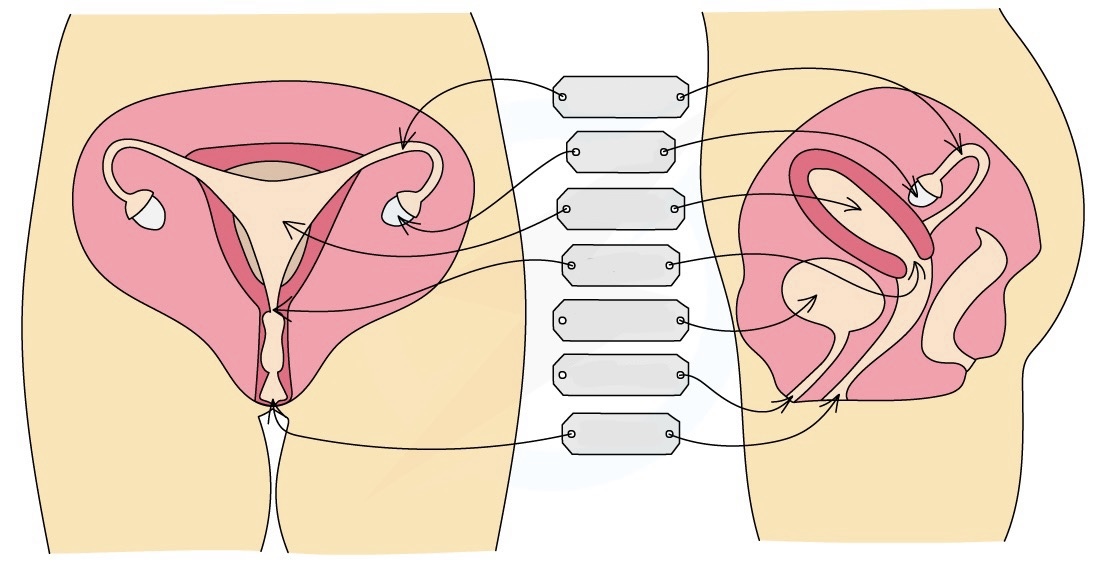
What are the parts of the female reproductive organ?
-Ovaries
-Fallopian tubes/oviduct
-Uterus
-Cervix
-Vagina
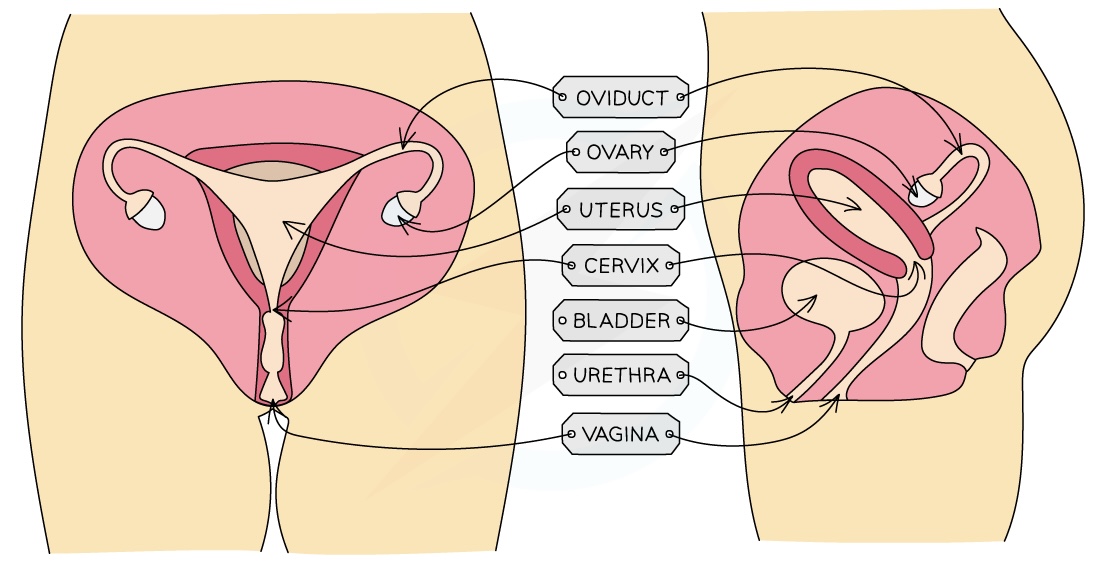
Ovaries
The female sex glands that contains the ova (which develops when FSH is released) and produce female sex hormones (oestrogen and progesterone)
Fallopian tube (oviduct)
Female organ that carries the ovum to the uterus; place where fertilization occurs.
Lined with ciliated cells to push released ovum.
Uterus
Hollow, muscular organ with thick lining where fertilised egg (zygote) implants to develop into foetus.
Cervix
Ring of muscle and opening to the uterus which keeps the developing foetus in place.
Vagina
Muscular tube that connects the uterus to the outside of the body, where penis is enters and sperm is deposited.
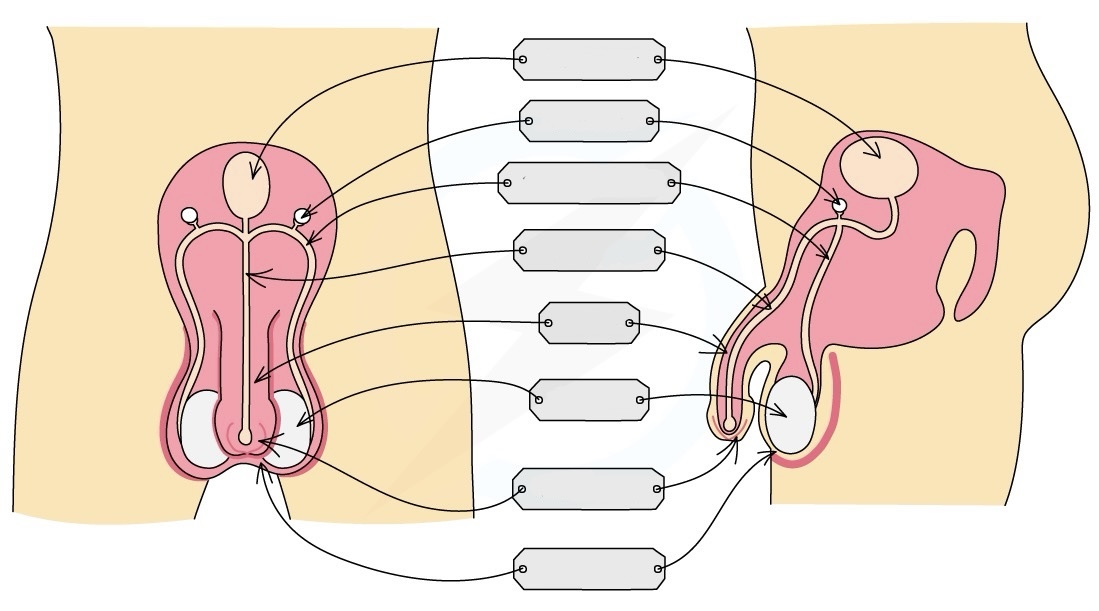
What are the parts of the male reproductive organ?
- Prostate gland
- Sperm duct
- Urethra
- Testis
- Scrotum
- Penis
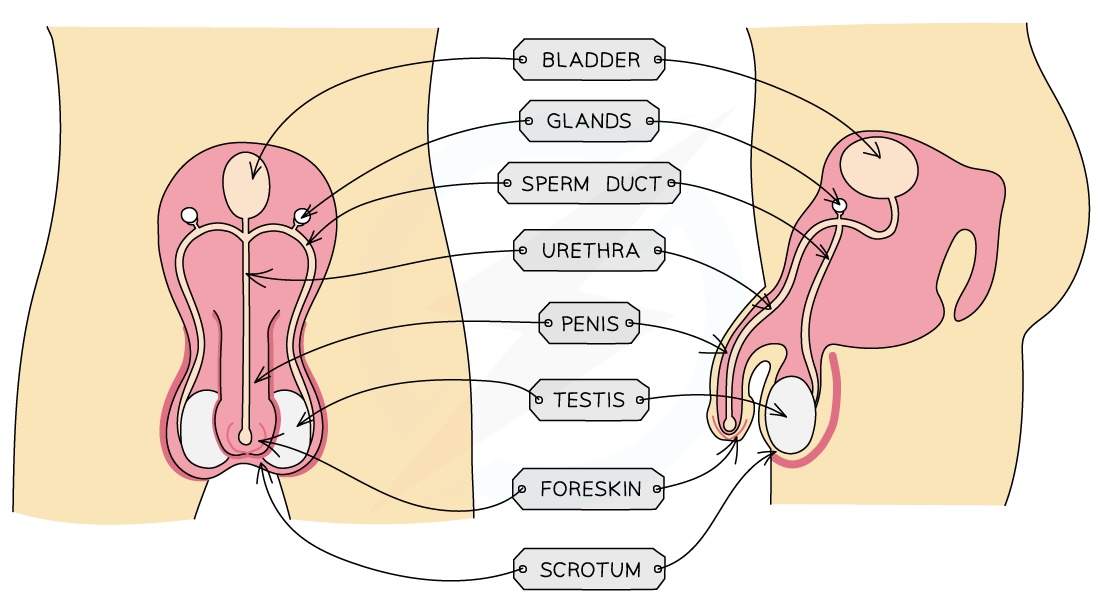
Prostate gland
A gland that secretes semen and provides sperm with nutrients
Sperm duct
Tube where sperm mixes with semen before being carried from the testes to the urethra for ejaculation.
Urethra
Tube (center of penis) that carries urine or semen. A ring of muscle prevents them from mixing.
Testis
Male sex gland that produces testosterone and sperm.
Scrotum
External sac that supports the testes to ensure sperm are kept at a slightly lower temperature than body temperature.
Penis
The male reproductive organ that removes urine from the body (bladder) and delivers sperm to the vagina during sexual intercourse.
The menstrual cycle. Average time? When is the egg released? How long does menstruation last?
28 days
Day 14
5-7 days and signals beginning of the next cycle.
After menstruation, lining starts to thicken again.
What is the menstrual cycle controlled by? Where are they produced
Oestrogen and progesterone (hormones released from the ovaries)
FSH and LH (hormones released from the pituitary gland)
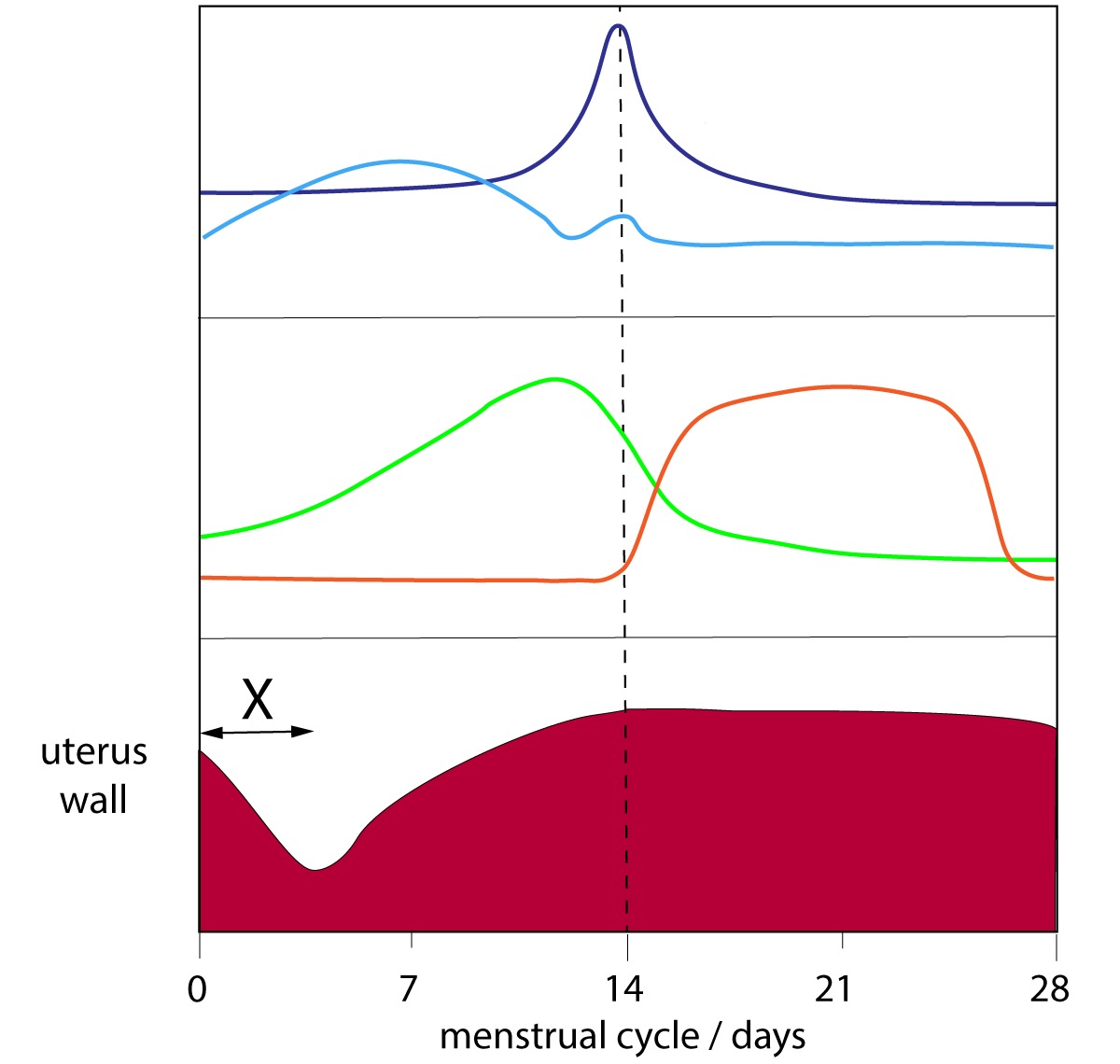
Hormones during the menstrual cycle

Role of oestrogen in the menstrual cycle (ovaries)
Oestrogen levels rise from day 1 to peak just before day 14 (like day 10). The peak in oestrogen occurs just before the egg is released.
- Thickens uterine lining.
- A decrease in oestrogen stimulates the release of LH
- Inhibits (stops) FSH production and stimulates LH production to trigger ovulation.
After ovulation it inhibits both so that no additional eggs are matured or released.

Role of progesterone in the menstrual cycle (ovaries)
Low between days 1-14, starts to rise after ovulation has started.
Maintains and thickens uterus lining.
Inhibits FSH and LH
If fertilisation doesn't occur, levels drop and menstruation occurs.
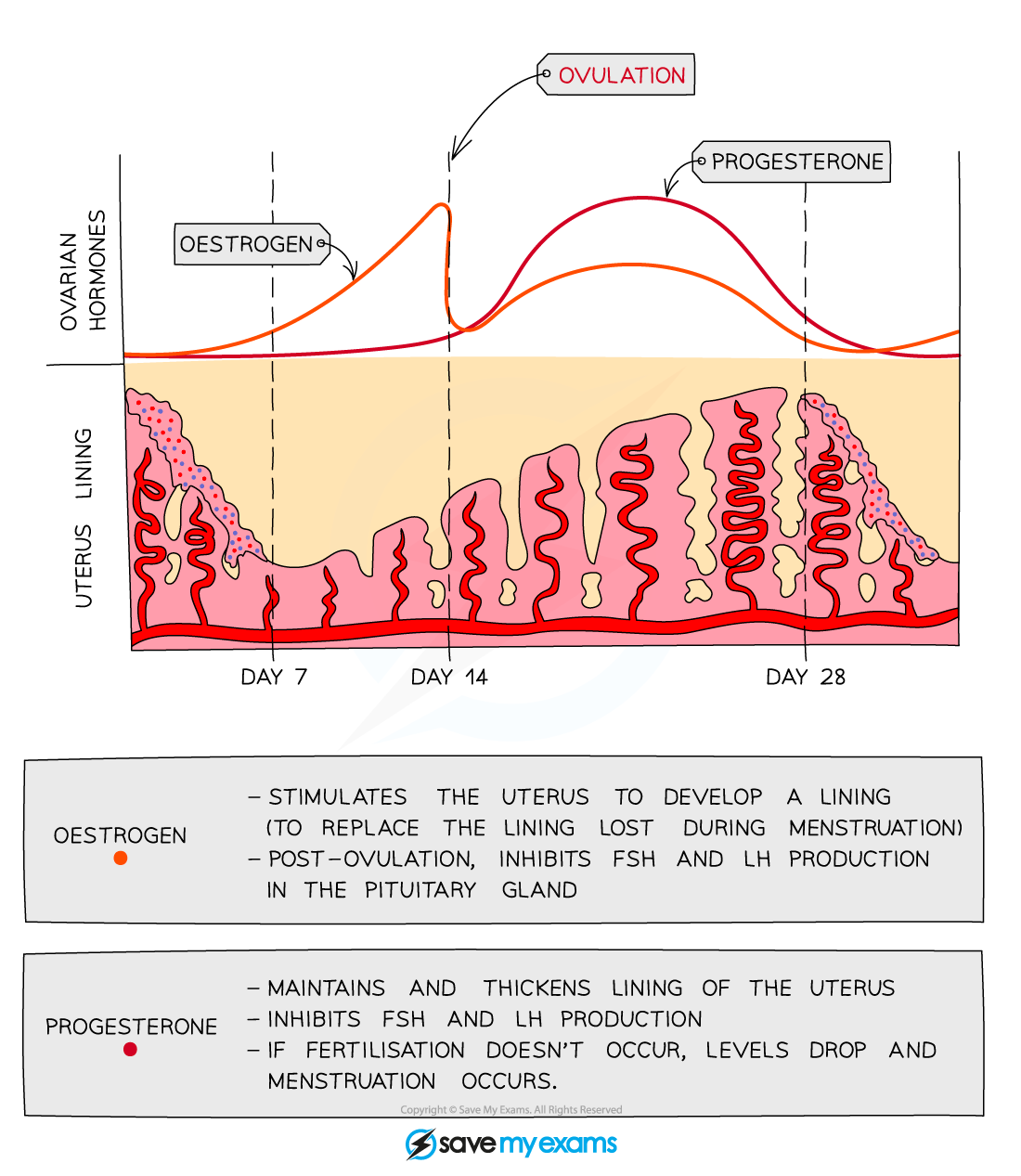
Role of FSH (follicle stimulating hormone) in menstrual cycle
- FSH (follicle-stimulating hormone) causes an egg to start maturing in the ovary
- Stimulates the ovaries to start releasing oestrogen
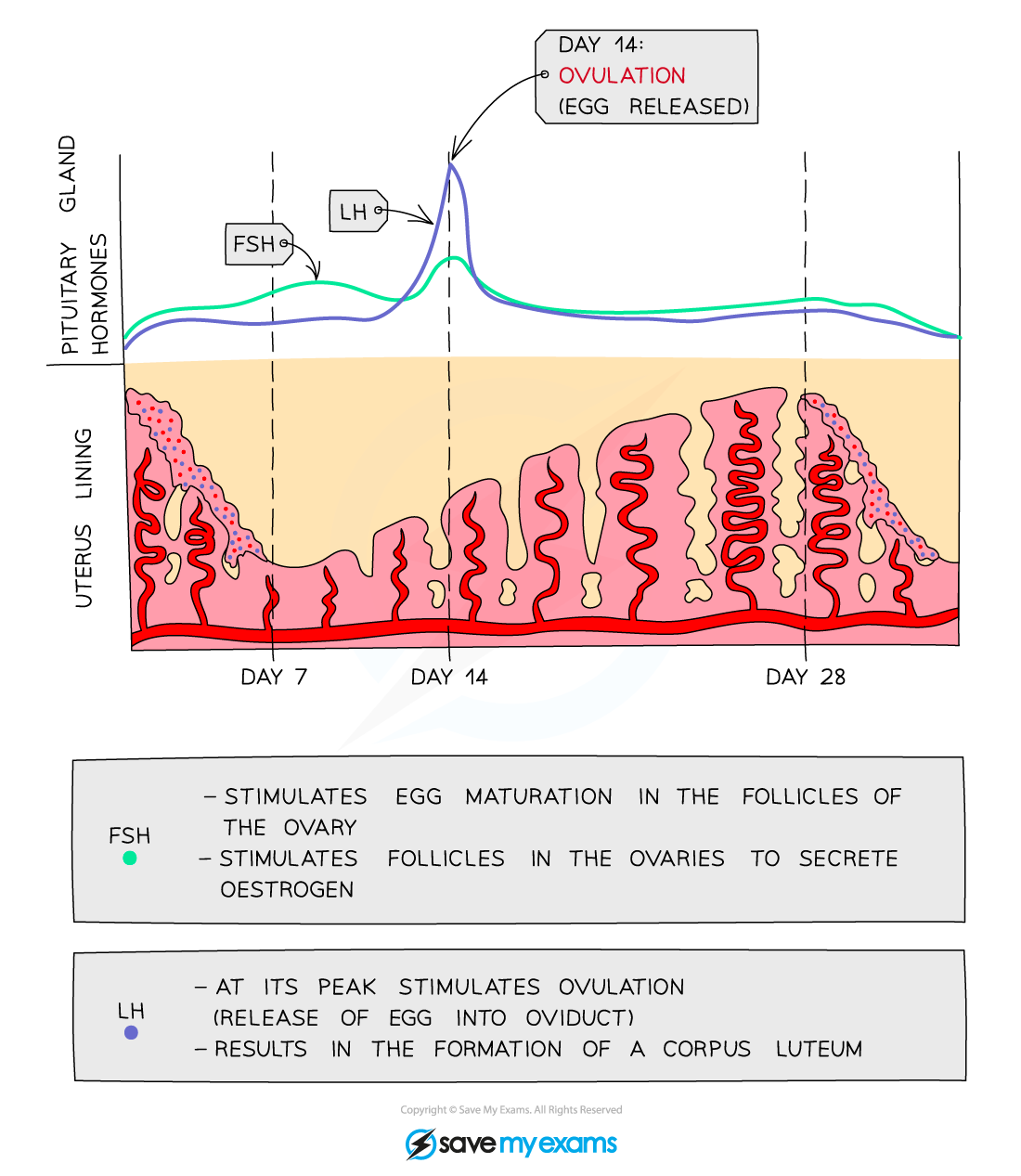
Role of LH (luteinising hormone) in menstrual cycle
- LH is released when oestrogen levels have reached their peak.
- Stimulates the release of the egg during ovulation.
- Stimulates the ovary to produce progesterone

Interaction between oestrogen, progesterone, FSH and LH
Pituitary gland produces FSH ~> causes development of a follicle in the ovary
Follicle produces an egg and oestrogen.
Oestrogen thickens uterus lining and inhibits FSH production
High oestrogen levels trigger LH so the egg is released from follicle (ovulation)
Follicle becomes corpus luteum (it stays in the ovaries), produces progesterone which inhibit FSH and LH and maintains uterus lining.

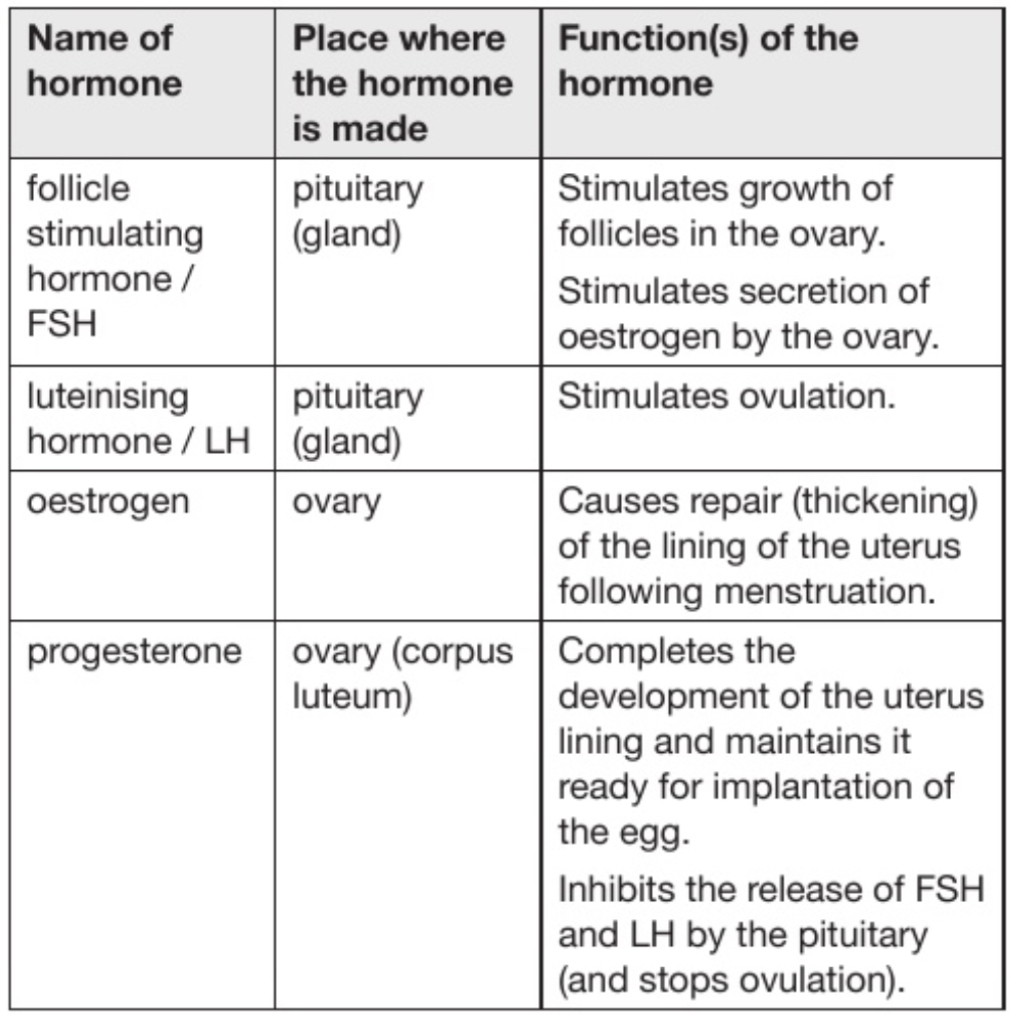
Two outcomes: egg is not fertilised/egg is fertilised.
1) corpus luteum breaks down ~> progesterone drops ~> menstruation.
2) pregnancy ~> corpus luteum continues producing progesterone until placenta develops -> placenta maintains progesterone throughout pregnancy.
Role of placenta
A structure that allows the exchange of substances (e.g oxygen, glucose, CO2, urea etc) between the mother's blood and that of the embryo/foetus. The placenta also anchors the embryo in the uterus.
In the placenta the mother's blood comes into very close to the blood of foetus but do not directly meet or mix.
The placenta secretes progesterone to maintain the pregnancy and prevent the embryo from aborting (being rejected by the mother’s body)
Why can't the mother's blood mix with the foetus'?
- Maternal blood is at much higher pressure so if the foetus were directly connected, it's blood vessels would burst.
- Different blood groups.
- Mother's immune system may treat the foetus' blood cells as foreign invaders
Umbilical cord
Tube containing the blood vessels connecting the fetus and placenta
Substances from mother to foetus blood and vice versa
From mother
Oxygen, glucose, amino acids, mineral ions, etc
Protein molecules (apart from amino acids) like antibodies
From foetus: carbon dioxide, urea
Why does the placenta need a large and constant supply of blood from the mother?
To nourish the growing baby so that the foetus can receive all necessary nutrients (glucose) and oxygen and waste products (urea, CO2) can be removed.
Why is placenta an efficient gas exchange surface?
- Has large SA
- Has a thin walk for short diffusion distance for efficient diffusion.
Placenta also acts as a barrier to toxins and pathogens, although not all are stopped from passing through such as:
Nicotine, alcohol, virus particles.
Explain how one type of molecules from the mother helps to protect the fetus from infection (3)
From mother antibodies can pass to baby to bind to the antigens in baby and destroy the pathogen/virus/bacteria
Amniotic fluid
Fluid within the amniotic sac that surrounds and protects the fetus
How does amniotic fluid protect the fetus?
It cushions against impacts/bumps/sudden movements to the maternal abdomen
It maintains a stable temperature
What are the secondary sexual characteristics?
These are not necessary for reproduction.
They are the changes that occur during puberty and they develop when sex hormones (oestrogen in females and testosterone in males) are released. These differ between males and females.
What hormone stimulates sperm production? Which one instructs the testes to secrete testosterone?
What hormones control the release of oestrogen from the ovaries?
FSH
LH
Pituitary hormones (FSH + LH)
Secondary sexual characteristics for females
- Breast development
- Menstrual cycle begins
- Growth of body hair (pubic, armpit)
- Hips get wider
Secondary sexual characteristics for males
- Growth of penis + testes
- Growth of facial + body hair
- Muscles develop
- Voice breaks
- Testes start to produce sperm